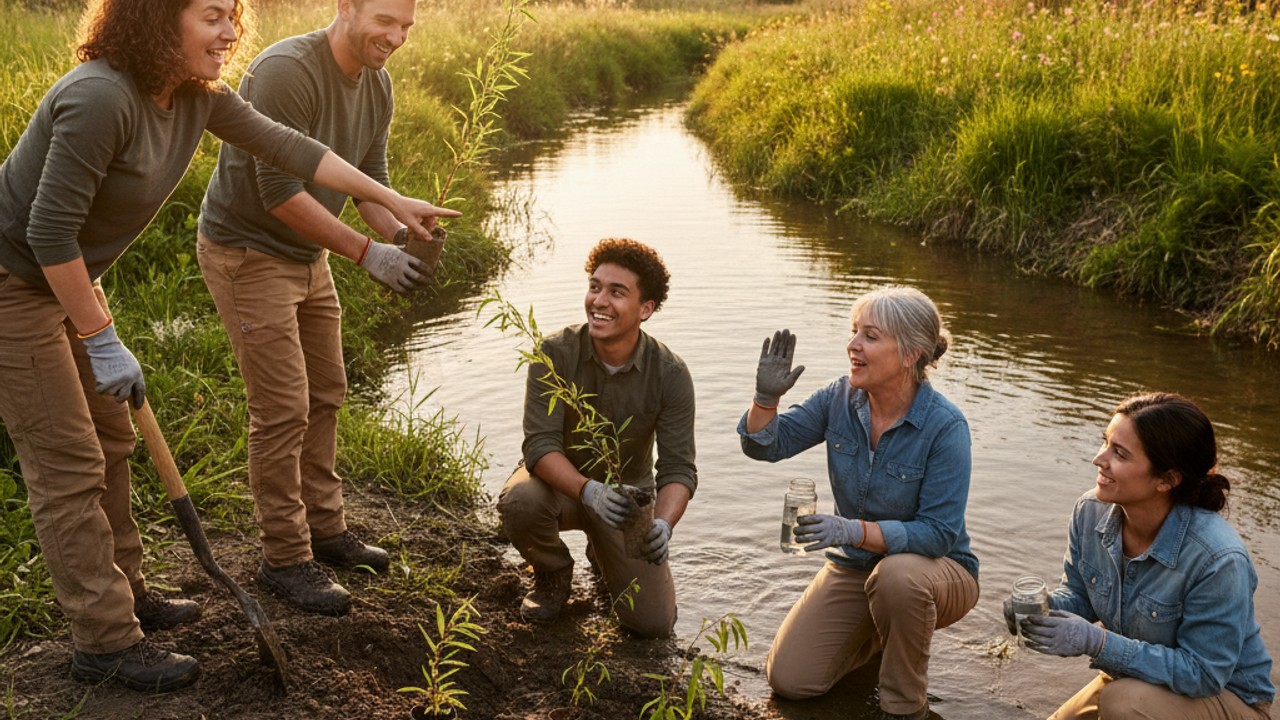When 15-year-old Amina first waded into her town's muddy creek, she thought it was meant to look that way: littered banks, an oily sheen on the surface, and a smell that chased birds away. Two summers later she stood barefoot in the same water and watched native minnows dart between newly planted willows. That change did not come from a single hero but from neighbors, teachers, and teenagers who learned that rivers are not just scenery — they are lifelines.
Why watersheds matter now
Freshwater life has been in dramatic decline: the Living Planet Report finds freshwater species populations fell by roughly 83 percent on average between 1970 and 2014, underscoring how fragile watersheds are and why restoration matters. Read more at WWF Living Planet Report.
Watersheds do heavy lifting for communities: they filter drinking water, reduce flood risk, and sustain farms and fisheries. The U.S. EPA explains how healthy watersheds underpin public health and economy in practical, everyday terms: What is a watershed?
Stories of repair and resilience
Across the globe nonprofits and local groups are turning decline into recovery. American Rivers documents how removing obsolete dams and restoring floodplains reconnects rivers and revives fish runs; their work shows hundreds of dam removals have helped systems rebound in measurable ways. Learn about dam removal and restoration at American Rivers.
Organizations like River Network focus on empowering communities and young leaders to defend local waters. Youth engagement creates a pipeline of environmental stewards who understand both science and civic action.
We learned how to measure water quality, lobby our town council, and plant trees — and suddenly the river seemed like ours to protect.
How the evidence and community converge
Nature-based restoration is not just sentimental: it is cost-effective. The Nature Conservancy and partners have documented that watershed restoration and floodplain reconnection provide measurable benefits for water security and flood mitigation. See examples and approaches at The Nature Conservancy.
Community-led action works. Small interventions — native plantings, debris cleanups, removing small barriers to fish passage, and advocating for green stormwater infrastructure — compound into larger ecological recovery. They also teach young people leadership, science literacy, and civic responsibility.
Get involved: simple steps that make a difference
- Join or support local river groups and national nonprofits like American Rivers and River Network.
- Participate in a creek cleanup or citizen-science water monitoring program to track progress and build local data.
- Advocate for policies that protect watersheds and fund nature-based solutions at city council or state levels.
- Bring youth into the work: mentoring and hands-on projects turn concern into lifelong stewardship.
Every restored stretch of river holds stories like Amina's: a community trained in water testing, a classroom that builds a bioswale, neighbors who win protections for a floodplain. Those are the acts that add up to climate resilience, healthier biodiversity, and cleaner taps.
Hope and a call to action: Restoration is not only possible, it is happening. Start local this month: find a nearby group, volunteer for a cleanup, or host a river talk at your school. If one kid can change how a creek looks in two summers, imagine what a motivated community can do in a decade.
For resources, training, and ways to plug in, visit River Network or American Rivers. Then bring a friend, bring a youth group, and bring hope to the water's edge.






